Northern Ireland’s economic development is heavily focused on cities and urban industries but much of the country remains rural. The counties of Derry, Antrim and Tyrone have imbibed a culture of self-help and developed local programmes that are sustaining towns and villages, from profit-for-purpose Workspace Group to the Lough Neagh Fisherman’s Cooperative.
—————————————————————————————————————————————————
The recreation centre in Draperstown, owned and run by profit-for-purpose organisation the Workspace GroupWorkspace Group: From derelict shirt factory to leading profit-for-purpose organisation
What can a small rural village with few resources do to create jobs and build local services? Pool the financial resources of its population to buy a former factory and set up a business there, expand that into other businesses generating significant profit each year and invest that money back into the community infrastructure.
This is the story of Draperstown and the wider Magherafelt area, which in 1985 was run-down and in economic decline. One of the area’s remaining major employers – a shirt factory – had recently closed down. The local community raised £60,000 to put down as downpayment on the former factory, which was turned into business units.
Today the Workspace Group operates across the UK and Ireland and has eight businesses ranging from sales of industrial waste heat recovery systems to recruitment, home insulation and employability. It runs its businesses commercially but on a profit-for-purpose model, with all profits returning to the local community.
‘Our primary focus is the social investment of Draperstown’, said chief executive Brian Murray. The organisation built and runs the recreation centre, it provided a new home for the library, runs an after school club as well as providing a community fund which offers small grants locally. It gives local social enterprises free office space and has developed social housing units. It has enterprise agency status and a board made up of business and community people as well as its founding 170 members, which guide its direction.
Draperstown is thriving, with an increasing school population and business is good, but it’s not hard to see what Draperstown would look like without Workspace. This part of Northern Ireland is scattered with small towns and villages that are struggling to keep shops and services running and seeing its young people and families move elsewhere. Murray says that the success of Workspace is that is has been developed from the bottom up. ‘In development there’s often that tension between grassroots and top down. Here we know what’s needed, we involve our members and it’s our money to spend. There was little happening in this town so we had to help ourselves. We made it work and the commercial approach has to be there to make it work’.
- The Workspace Group’s most recent annual report can be viewed here
Lough Neagh: Fisherman’s Cooperative: Can community ownership of the lough save one of NI’s truly indigenous industries?
Lough Neagh is the largest freshwater lake in the British Isles and has mythical status in northern Irish history.
It is also home to the European Union’s largest wild eel fishery, which for 50 years has been run as a cooperative to protect the rights of local fisherman, and keep the social and economic gains of the fishery in the local area. While a number of employees manage the silver eel fishing at Toome Bay, a further 180 self-employed fisherman fish their own stocks which are then marketed and sold by the cooperative.
But stocks of eel and numbers of fisherman are in decline, and pollution and sand dredging by commercial operators are beginning to take their toll, not only on the environmental impact of the lough but also on the economic viability of the fishery. The cooperative has always subsidised the business but as stock levels decline it is becoming less viable and plans are now being drawn up to diversify the business into fishing for scale fish and building a tourism offer around the fishery. Homeplace, a new centre celebrating the life of Seamus Heaney, recently opened its doors in nearby Bellaghy and both it and plans for an educational centre at the Lough Neagh fishery are part of a regional plan to expand tourism in the area. The most exciting plan for the lough however is to move it into community ownership, from its current owner, the earl of Shaftesbury. The Lough Neagh Development Trust has been set up to explore the options.
Forest school activities in GarvaghGarvagh Development Trust: Turning a former school building into a hub for outdoor activities, innovation, heritage and a forest school
Garvagh is a rural village in the foothills of the Sperrin mountains with a population of 1300. In August 2013 its local high school closed down due to falling numbers of pupils.
People were left feeling bitter and angry after the closure, says Karin Eyben, of the Garvagh Development Trust, set up in 2016 to pursue ideas around transferring the school building to community ownership.
The former school building backs on to 400 acres of forest – which houses the Garvagh Pyramid – and plans are being explored for the building to be transferred to the trust and for a hub for outdoor activities and tourism to be created on the site.
The trust has recently established a forest school at the site, with funding from the Big Lottery and is working with a number of local primary schools on forest-based activities. Its vision is for the former school to become a centre for educational and cultural activities, from the creation of a trail head with access to mountain bike trails, to glamping, a revamped local museum and a permanent forest school educational facility.
‘Imagine a school where children and young people are learning together in a forest: coming together to do fractions using twigs, trigonometry by climbing trees, science when splashing in the stream, and history by undertaking archaeological digs and interpreting hieroglyphics. This is the shape of how education will be delivered in Garvagh over coming years’, said Karin.
Garvagh is a major gateway through the mid-Ulster area down to the Causeway coast and could use the site to build on its potential for tourism, but Karin also hopes that giving the old school building a new lease of life will support social innovation and the growth of new connections and relationships both within the town and further afield.
Dungiven Castle, which is leased by the Glenshane Community Development initiativeGlenshane Community Development initiative: Creating opportunities for young people
Outward migration was the main trend in Dungiven at the end of the 1980s, as waves of young people left the area.
‘There was one plane going to Philadelphia that had 44 of our young people on it,’ manager of Glenshane Community Development Mairead McCormack recounts.
Local people met shortly afterwards to come up with ideas to stem the tide of migration and create opportunities for the town’s young people.
Having created the Glenshane Community Development initiative, they went on to build an enterprise centre on the outskirts of the town with 13,000 square foot of work space, creating local jobs, many in ancillary services to the construction sector.
Glenshane Community Development now also owns a building on the town’s main street from which it runs advice and training programmes and helps develop local entrepreneurship among its young population.
‘No big businesses are going to come here so we need to work with young people and help them to set up local enterprises’, Mairead says. ‘Before it was all about going to university but now young people are looking to be entrepreneurs.’
A further 14,000 square foot of accommodation was constructed in the form of a business park on another side of Dungiven to contain office space, a disabled centre and to include childcare services to help local women re-enter the work force within the textile sector, primarily. A further 20,000 square foot has been added, offering both workspace and office space.
Through the property and land it now owns it has created low-priced workspace and conference facilities for hire and is now looking at future ideas, for example the development of hot-desking spaces for local self-employed people from vacant town centre properties.
The organisation also created a 22-acre environmental park with orienteering routes and educational paths which tie into key stages of the school curriculum, and took over the lease for, and refurbished, Dungiven Castle. The castle now houses a school, Gaelcholáiste Dhoire, offering secondary education in the medium of Irish to children from the counties of Derry, Antrim and Tyrone.
The Junction in Dungannon is the new home for STEP NIStep NI, Dungannon: Building an income stream through helping new migrants to integrate
We called ourselves the ‘people who had survived the war’ says Bernadette McAliskey, director of the South Tyrone Empowerment Programme (Step NI) in Dungannon.
As a network of different locally-based organisations across rural areas trying to hold their communities together the last thing they needed was the ‘tsunami of peace funding’ which threatened to derail those structures which had held places together.
Since 1996 Step has built up into an anchor organisation for the area, with a charity arm and an enterprise arm, but with no core government funding.
South Tyrone is rich in small businesses, particularly in agriculture and engineering and, since the signing of the peace agreement, began to attract migrants from Europe and elsewhere. The area has seen the highest rise of immigration in northern Ireland, with populations from Portugal and Portuguese-speaking Africans in particular coming to live there.
Having spent the period of the Troubles working closely with local communities, particularly those ‘furthest from the table’, Step NI quickly became aware of some of the problems new migrants were facing as they tried to integrate. There was little help for those with poor English language skills who were unable to understand the information needed to help them access local services.
Step decided to set up a translation and interpretation service to help improve access to services by new migrants, and also to create an income for its own charitable work. It now offers 250 interpreters across the whole of the region, in 30 different languages. This social enterprise helps fund its community development work, be that working with long-term unemployed people, new immigrants or those suffering from the collapse of social housing.
As this area of northern Ireland emerged from the troubles and opened itself up to new immigrants, Step turned inward migration into an opportunity for its work and for the local area.










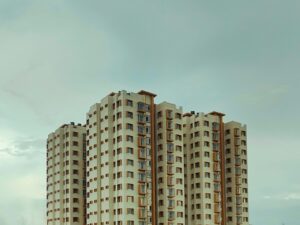
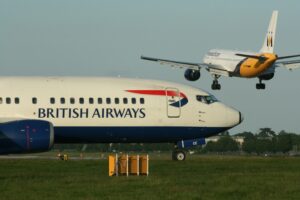
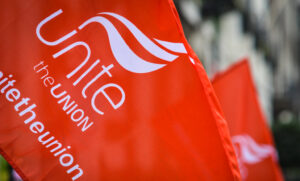
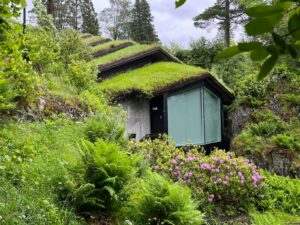

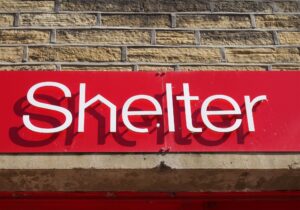
Leave a Reply